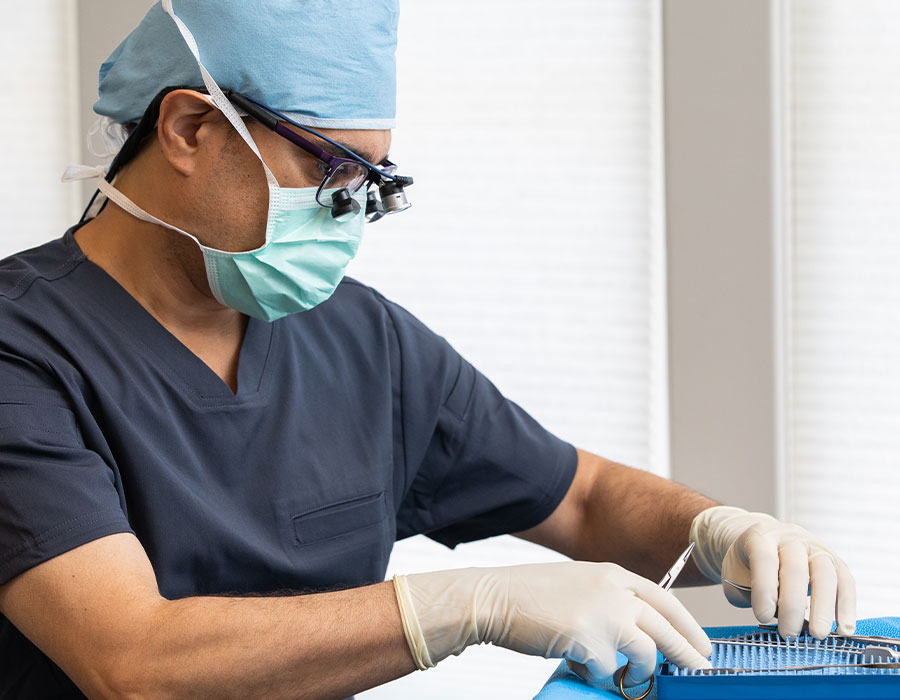Facial Fat Transfer
Cosmetic procedure to remove and inject excess fat for natural volume restoration, wrinkle reduction, and enhanced facial contours.

Cosmetic procedure to remove and inject excess fat for natural volume restoration, wrinkle reduction, and enhanced facial contours.


The face naturally loses volume of muscle, fat, and bone as we get older. Facial fat transfer also known as facial fat grafting, facial fat injection, or facial fat rejuvenation can be a great way to enhance the volume of depleted tissue in the cheeks, chin, and lips. This a procedure whereby fat is harvested from another body part, such as abdomen, flanks, thighs, etc, via a liposuction technique, and then injected into the face to counteract the facial volume fat loss that occurs with natural aging process. This is a minimally invasive procedure that minimizes the appearance of crow’s feet, forehead wrinkles, bags under the eyes, and the lines between the nose and mouth.

Team
Focusing on a natural and age-appropriate look, Dr. Amadi will deliver the finest personalized care, giving you the results you desire.
Meet Dr. AmadiBefore & After
Using your own fat to add volume and rejuvenate your face.
View the gallery


The procedure can be done on local anesthesia (tumescent) with oral sedation, with IV sedation (“twilight sedation”) or under general anesthesia depending on patient and surgeon preference. Dr. Amadi will determine the regions of the face that may benefit from fat transfer (cheeks, temples, brow, lateral cheeks, and sometimes upper and lower lids depending on surgeon technique/experience). Based on that presurgical determination, he will have a goal of how much fat needs to be harvested and will examine the body for areas that can provide the required fat. This may be the inner knees, inner or outer thighs/saddlebags, or abdominal region.
The area to be harvested is then injected with tumescent solution that provides local anesthesia. IV sedation or general anesthesia can also be utilized. Once the local anesthesia has had a chance to fully provide its effects (numbing and vasoconstriction) the fat is harvest though a suction technique through a few tiny stab incisions via a suction technique. Most surgeons feel hand vacuum with a syringe traumatizes the fat cells less, so motorized liposuction is usually not used for face fat harvesting. When extremely large volumes of fat is required, motorized vacuum liposuction can be used.
The fat cells are then processed via drainage or centrifuge (surgeon preference) and then transferred to smaller syringes to be injected into the face. Newer technology is now available to facilitate this process but does have an increased cost for patient and physician. Some surgeons also advocate the use of Platelet rich plasma to improve fat survival, but this is still controversial. The fat is then injected into the facial regions in a multiplanar fanning technique, usually in the deep tissues to minimize risk of contour irregularity. The face is often numbed with local anesthesia to make the patient more comfortable if IV sedation or General anesthesia is not used. The procedure can be combined with other surgeries such as eyelid, brow, face and neck lifts.
The recovery is usually relatively easy as it is minimally painful, and without much bruising (unless other surgical procedures are combined). Most surgeons do not recommend ice as we want to maximize fat survival. The donor site is often sore as a result of the fat harvesting. The face will seem puffy or overfilled in the first couple of weeks.
Most surgeons will overfill in anticipation of fat loss, so in the first 2-4 months, the face will seem overfilled/puffy in the areas that were injected. Between 1-3 months some of the fat cells will die off. At 3-4 months, the volume will be in its lowest state and then from 4 to 9 months the fat cells that have survived will start to plump up so that I generally tell patients that the results aren’t finalized until about 9 months.
There are other regenerative properties that are associated with fat transfer as the fat also has growth factors/cytokines that seem to improve skin texture and scars. This is an area of new research and “the jury is still out”.